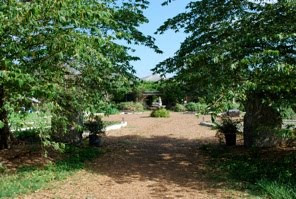as written by Rebecca Kleinman:
With so many visiting chefs cooking gourmet meals, we get spoiled down here at Paradise Farms. But a late August luncheon stood out even more so for its two themes—Indian and jackfruit.
To celebrate the publication of his story about South Florida farms in that morning’s Sun-Sentinel, Jaideep Hardikar, a recipient of the Alfred Friendly Press Fellowship for foreign journalists to work in the U.S., thanked his subjects by hosting a culinary feast from his homeland. Fifteen guests, the majority of which were local farmers who supplied extra delicacies like pickled green mango and goat cheese, sampled curried onion and cauliflower floret fritters, followed by a jackfruit masala with all the trimmings.
“Jackfruit is considered ‘meat’ in India,” said Hardikar, who embraced the arduous task of separating its edible portions enveloped in oozing latex. “It’s also seasonal there.”
Like meat, jackfruit is a vehicle for whatever spices and other ingredients it’s cooked with. It’s a much healthier option though, not to mention a welcomed break from other vegetarian substitutes like tofu. Hardikar suggests using unripe or young fruit for the best results and buying Indian groceries at Little Market in Fort Lauderdale.
The motif continued with jackfruit goat’s milk ice cream from Redland Mediterranean Organics. It was the ideal finish for a spicy meal in the Homestead heat.





















